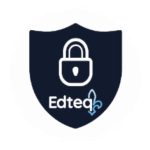(In alphabetical order, According to the list provided by the Centre d’acquisitions gouvernementales du Québec)
Thanks to Service national du RÉCIT, domaine de la mathématique, de la science et technologie (Sonya Fiset, Pierre Lachance, Marc-André Mercier).
For more information on robotics in schools, refer to the article In the Universe of Robots, published in EngagED Learning magazine, Spring 2022 issue.
Self learning in French only.
Arduino: Self learning tutorials
Arduino sets contain parts to build various robots and systems (home automation, sensors, greenhouse management, etc.). They are mainly offered to more advanced students in programming since they require connections with very small parts without soldering.
Programming: ArduBlockly, Blockly@rduino, BitBloq, TinkerCad, mBlock, Arduino IDE
Bee-Bot and Blue-Bot
How to introduce BeeBots to your class for the first time.
This is a playful bee-shaped robot that allows you to program movement sequences. It is easy to use with transparent mat and custom images. Robots: Botley, Mouse Code and Go, Rugged and Artie 3000 have essentially the same functions.
Programming: buttons on the robot or the Blue-Bot application or the online simulator.
Cubelets
These are small magnetic cubes that can be used to program different actions. Each cube has a colour that represents a function like “Action”, “Sense” or “Think” that can be used to program the robot.
Programming: cubes or application.
Resources from Toronto District School Board
Dash is a robot that can be programmed to move, rotate its head, make sounds, and turn on lights. It has distance sensors. Dot can be paired with Dash for complementary uses.
Programming: WonderWorkshop application, tablet or cloud device only.
Edison
The Edison robot is one of the least-expensive on the list. It has several sensors and LEGO studs so that LEGO bricks can be attached in a creative fashion.
Programming: EdBlocks, EdScratch, EdPy.
EV3 or SPIKE Prime LEGO
EV3 tutorials, EV3 Lessons
SPIKE Prime Lessons, SPIKE Prime Getting Started
EV3, and its replacement SPIKE Prime, is a set of components that are attached to LEGO blocks. It contains several types of sensors as well as a smart brick.
Programming: Classroom LEGO application, EV3 or SPIKE Prime software, MakeCode EV3 with simulator, Scratch.
Makey Makey
Resources from Toronto District School Board
A Makey Makey card is a programmable microcontroller with which you can control various everyday objects as if they were touchpads. Using wires with alligator clips and the principles of electricity, the USB-connected card facilitates the exploration of the world around us, thanks to the MATIS approach.
Programming: Scratch
Matatalab
Matatalab is a playful robot, connected to a control tower, with which you can program movement sequences. Tiles are available for drawing and music extensions.
Programming: set of tiles to place on a programming table, application.
mBlock: mBot, Ranger, Codey Rocky, Ultimate:
mBlock robots or sets offer certain assembly options, motors and sensors, while keeping the same programming application.
Programming: mBlock, Arduino IDE, Scratch.
Micro:bit, Micro:bit V2:
A Micro:bit card is a programmable microcontroller. It also allows you to explore the concepts of electricity. If motors are added, it can be used to move a robot. A few sensors are integrated including a compass, an accelerometer, a temperature and light sensor, and in version 2, a speaker and a touch sensor.
Programming: Scratch, MakeCode with simulator.
Ozobot:
The Ozobot Evo is a small 2.5 cm tall robot that can be programmed to move and follow lines. A series of pre-programmed codes can be added to the journey. Older students can also program it with blocks.
Programming: pencils with codes, applications Ozobot, OzoBlockly.
Raspberry Pi
Raspberry Pi kits contain parts to build various robots and systems, but since this card is a nano-computer upon which an operating system can be installed, it offers computing possibilities that are well-suited to students who are advanced in programming, including those enrolled in specialized programs.
Programming: Scratch, Python, Arduino IDE.
Root
This new robot is very versatile thanks to its three programming levels. It has sensors, and it is possible to use it vertically on a magnetic board for demonstrations.
Programming: iRobot with simulator.
Sphero: mini, SPRK+, Bolt, RVR Row, Ollie
Products in the Sphero range can be programmed to perform movements while rolling on the ground and reacting to obstacles or collisions. They are equipped with sensors. The SPRK+ and Bolt models are sealed, so they can be placed into liquid.
Programming: Sphero application.
Thymio
The Thymio robot is also a versatile product intended for a very varied clientele. You can add LEGO blocks to it thanks to studs on its surface. Several sensors are integrated into it.
Programming: Blockly4Thymio and Thymio Suite.
WeDo or SPIKE Essential LEGO:
WeDo, like its replacement, is a set of several parts that lends itself well to educational robotics with the MATIS approach. In addition to the brick, there are one or two motors, a few sensors, and building plans. Lessons are available.
Programming: LEGO WeDo and SPIKE applications.











